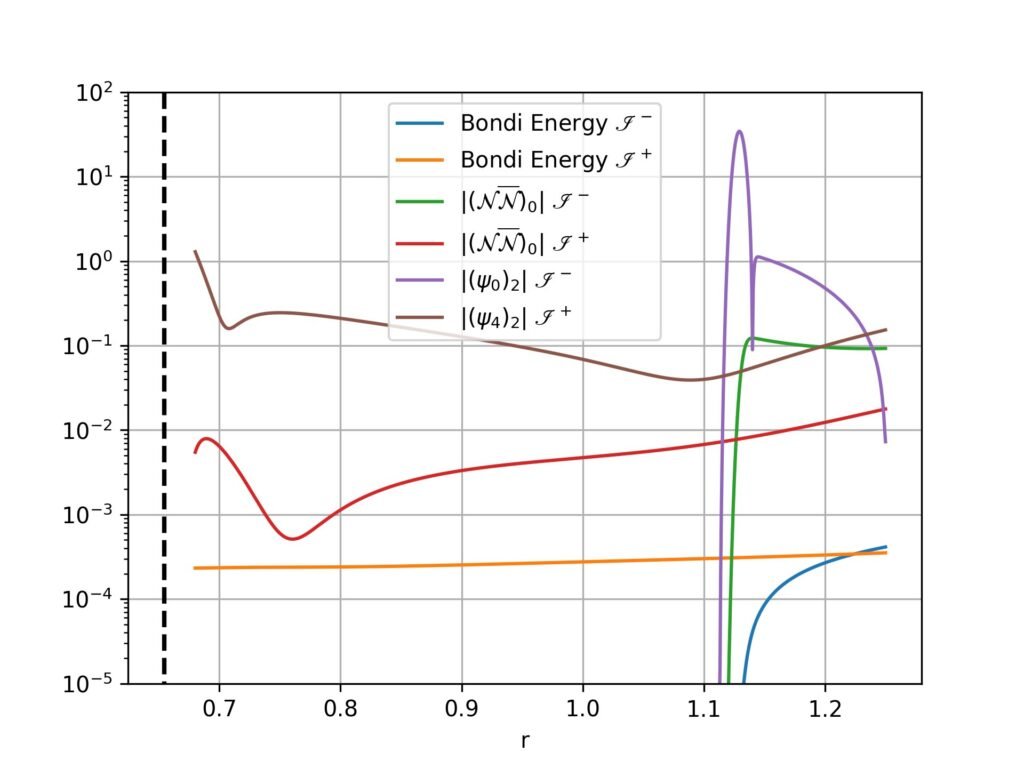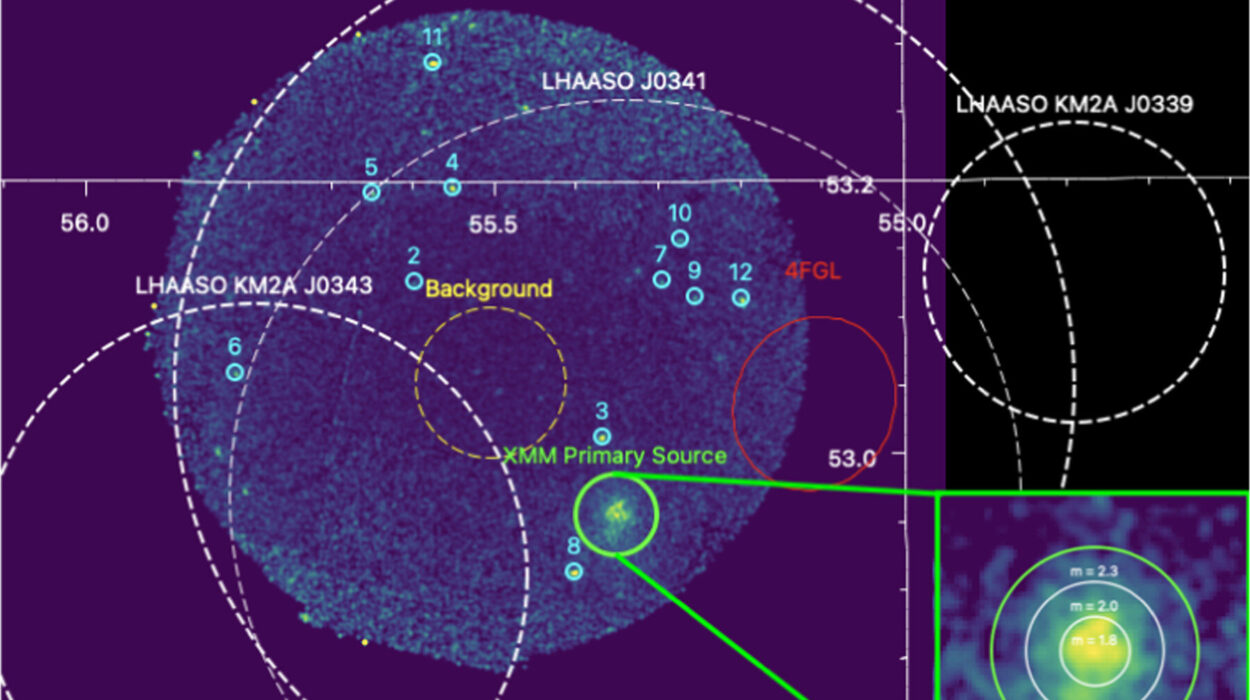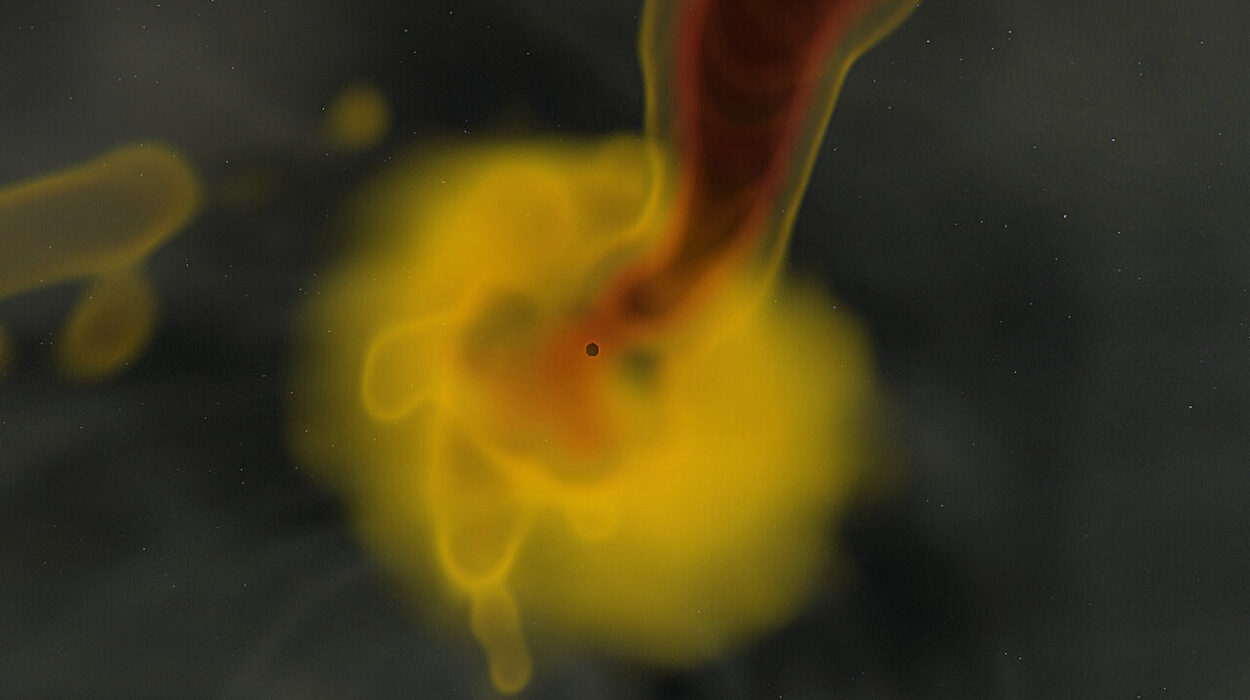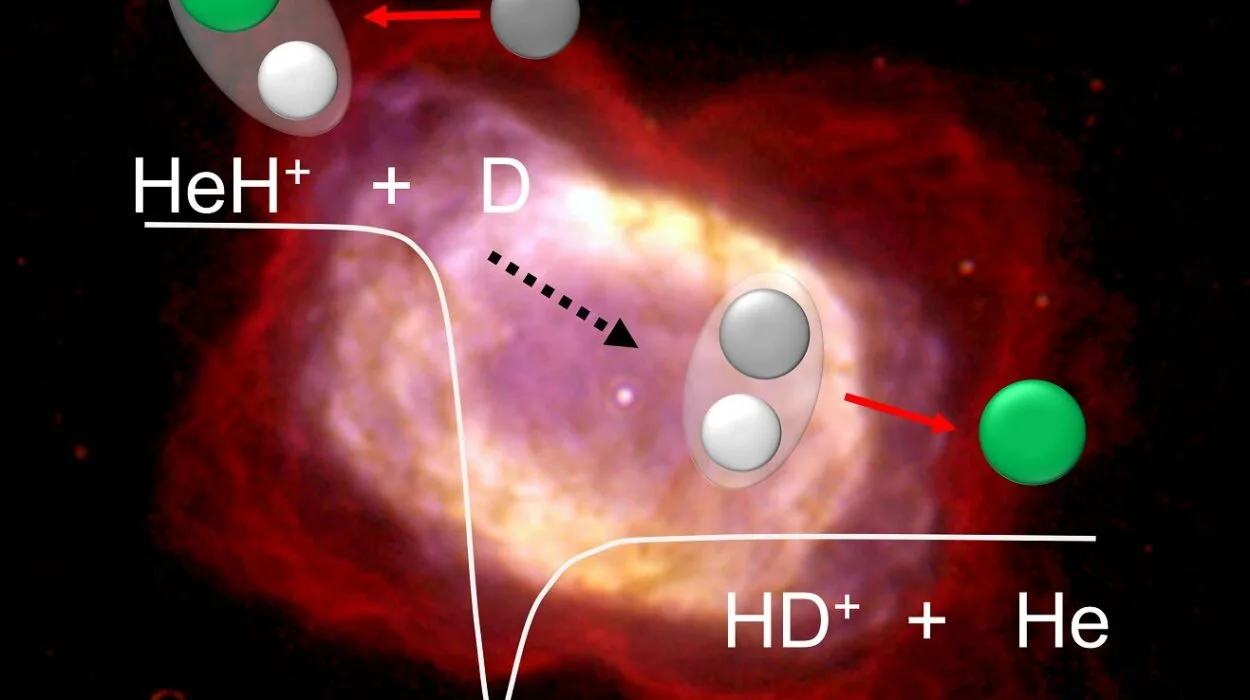In the shadowy edges of spacetime, where gravity is so intense that not even light can escape, a remarkable story unfolds—one written not in ink but in ripples. These are gravitational waves: the trembling of spacetime itself, unleashed by cataclysmic events like colliding black holes or neutron stars. And now, for the first time in scientific history, researchers have successfully traced the full arc of one such wave’s odyssey—from the infinite past, through the heart of a black hole, to the infinite future.
This extraordinary feat, reported in Physical Review Letters, was achieved by scientists from New Zealand’s University of Otago and University of Canterbury. Led by Professor Jörg Frauendiener, Dr. Chris Stevens, and doctoral researcher Sebenele Thwala, the team has done what no one has managed before: they’ve simulated the entire cause-and-effect chain of a gravitational wave as it scatters off a black hole.
Their achievement isn’t just a technical marvel—it’s a philosophical one. It offers a clearer, more complete picture of how black holes interact with the universe around them and how gravitational energy flows through the cosmos. And it opens a path toward answering one of the deepest questions in theoretical physics: how do the most extreme objects in the universe manipulate the very fabric of reality?
Gravitational Waves: Echoes from the Abyss
Gravitational waves are among the most elusive phenomena in the universe. First predicted by Albert Einstein in 1916 as part of his general theory of relativity, they are distortions in spacetime caused by massive accelerating bodies. Picture a trampoline warped by cannonballs—now imagine that warping spreading outward like ripples on a pond. That’s the essence of a gravitational wave.
But tracking such a ripple from its cosmic origin to its distant endpoint is profoundly difficult. That’s because general relativity, elegant though it may be, presents a formidable computational challenge. Simulating gravitational wave behavior involves solving the highly nonlinear Einstein field equations—ten coupled differential equations that describe how matter and energy shape spacetime.
Most existing simulations fall short because they only capture a small region of spacetime. They tell us what happens near a black hole, but not where the wave comes from or where it ultimately goes. In other words, they show the middle chapters but skip the beginning and the end.
The Otago-Canterbury team has changed that. They’ve found a way to simulate the full journey—from “past null infinity” (the theoretical boundary where incoming waves originate) to “future null infinity” (where outgoing waves escape). These are not just mathematical abstractions—they are the bookends of the universe for anything traveling at the speed of light or less.
Solving the Infinity Problem
At the heart of this breakthrough lies a long-standing obstacle in gravitational physics: how to handle infinity.
In general relativity, isolated systems like black holes reside in “asymptotically flat” spacetime. That is, spacetime becomes flatter and emptier the further you move from the massive object, eventually approaching nothingness at infinity. But infinity, by its nature, defies direct computation. Numerical simulations typically cut off at some arbitrary boundary, missing the complete behavior of waves traveling in and out of the system.
To tackle this, the team turned to a sophisticated mathematical formalism known as Friedrich’s Generalized Conformal Field Equations (GCFE). This approach allows researchers to rescale spacetime, shrinking infinity to a manageable size without losing any of its essential structure. Essentially, they folded the infinite universe into a finite box that a computer could handle—without breaking the laws of physics.

“The need to incorporate infinity allows us to compute the total energy and momentum of the spacetime,” said Sebenele Thwala. “This tells us how much of the gravitational wave’s energy is absorbed by the black hole and how much escapes to infinity in a rigorous way.”
The COFFEE That Powers the Cosmos
Of course, theory alone doesn’t bend computers to your will. The team needed software that could handle this novel approach. Enter COFFEE: the COnFormal Field Equation Evolver, a custom-built numerical engine designed to evolve Einstein’s equations through these conformally compactified spacetimes.
Using COFFEE, the researchers created detailed simulations of gravitational wave pulses as they approached, interacted with, and scattered off a Schwarzschild black hole—a non-rotating, uncharged model of a black hole described by general relativity.
They tested a range of wave amplitudes, from gentle ripples to more forceful jolts, and tracked how much energy was absorbed by the black hole versus how much escaped. The results were striking.
“Even for weak incoming waves, only about 8.5% of the energy escapes to future null infinity,” explained Dr. Stevens. “The rest is swallowed by the black hole. And even when we increased the wave strength, only around 20% of the energy managed to get away.”
Spacetime, it turns out, is astonishingly stiff. Unlike a trampoline or a pond, it resists distortion with fierce tenacity.
News from the Edge: Bondi Energy and the Radiation Ledger
To understand the energy balance of the system, the team turned to two powerful tools from mathematical relativity: Bondi energy and Bondi news. These are quantities defined at null infinity that help describe the energy and radiation content of a system.
“The Bondi news brings ‘news’ that there is gravitational radiation,” said Thwala. “If it’s non-zero, it means there’s radiation flowing through that part of the universe.”
Meanwhile, Bondi energy represents the total energy content on a given light-like surface—a quantity notoriously hard to define in general relativity. These measures allowed the team to confirm that energy was conserved with remarkable precision throughout the simulation, a critical validation of their approach.
Even more intriguing were the nonlinear effects they observed. Despite starting with clean, simple waveforms, the interaction with curved spacetime generated new waves—an echo of backreaction, where waves create more waves as they propagate through dynamic geometry.
Quasinormal Ringing: The Song of the Black Hole
One of the most haunting features of the simulation emerged at future null infinity. As the scattered gravitational waves reached the edge of spacetime, they exhibited a distinct oscillation pattern known as quasinormal ringing. This is the natural vibration mode of a black hole, akin to the fading chime of a struck bell.
What’s remarkable is that this ringing was independent of the incoming wave’s properties. No matter what kind of wave they sent in—gentle or fierce—the final oscillation frequency was the same. This confirms a prediction from black hole perturbation theory: that these “ringdowns” are determined solely by the black hole’s mass and geometry.
It’s like the black hole has its own signature sound—unchanged by what disturbs it.
A Window Into Cosmic Truths
Why does this matter?
Because for the first time, physicists can track the full input-output system of a gravitational wave interacting with a black hole. This has profound implications for observational astronomy, especially for experiments like LIGO and Virgo, which detect real gravitational waves from space.
Until now, we could only infer what was happening near a black hole based on the waves we detected far away. Now, thanks to simulations like these, we can model the entire interaction and understand how much energy is absorbed, scattered, or transformed.
“Having data at both infinities allows one to make rigorous statements about what is going in to what is going out,” said Dr. Stevens. “This helps answer questions about how black holes scatter gravitational waves and how much energy is radiated versus absorbed.”
Pushing the Horizon Further
Despite the success of their approach, the researchers acknowledge there’s room for improvement. In their current simulations, the initial wave isn’t set directly on past null infinity—it’s a step removed.
“The main problem is that the initial wave is not set directly at past null infinity,” noted Prof. Frauendiener. “Being able to set the ingoing wave directly and then evolve it forward to future null infinity would be ideal.”
Still, the team is focused on refining their current models and using them to investigate the global properties of the scattering problem. In a universe where most things are hidden behind horizons or lost to infinity, every sliver of insight counts.
The Road Ahead: Toward a Unified Understanding
This work isn’t just about gravitational waves or black holes. It’s about the possibility of understanding the universe at its most extreme. It’s about finding coherence in the chaos, structure in the silence, and meaning in the mathematics of spacetime.
The Otago-Canterbury team has taken a major step toward that goal. By bending infinity into the grasp of computers, they’ve made it possible to study cause and effect on the grandest scale imaginable—from the ancient past to the far future, from the cradle of a wave to the dying echoes of a black hole’s ring.
Their results don’t just echo in the mathematics of the cosmos—they resound in the human quest to know, to explain, and to marvel.
Because in the end, gravitational waves are more than signals. They are whispers from the universe itself—messages carried across eons, now decoded by minds curious enough to ask, what if we could follow one… all the way?
Reference: Jörg Frauendiener et al, Fully Nonlinear Gravitational Wave Simulations from Past to Future Null Infinity, Physical Review Letters (2025). DOI: 10.1103/PhysRevLett.134.161401.






